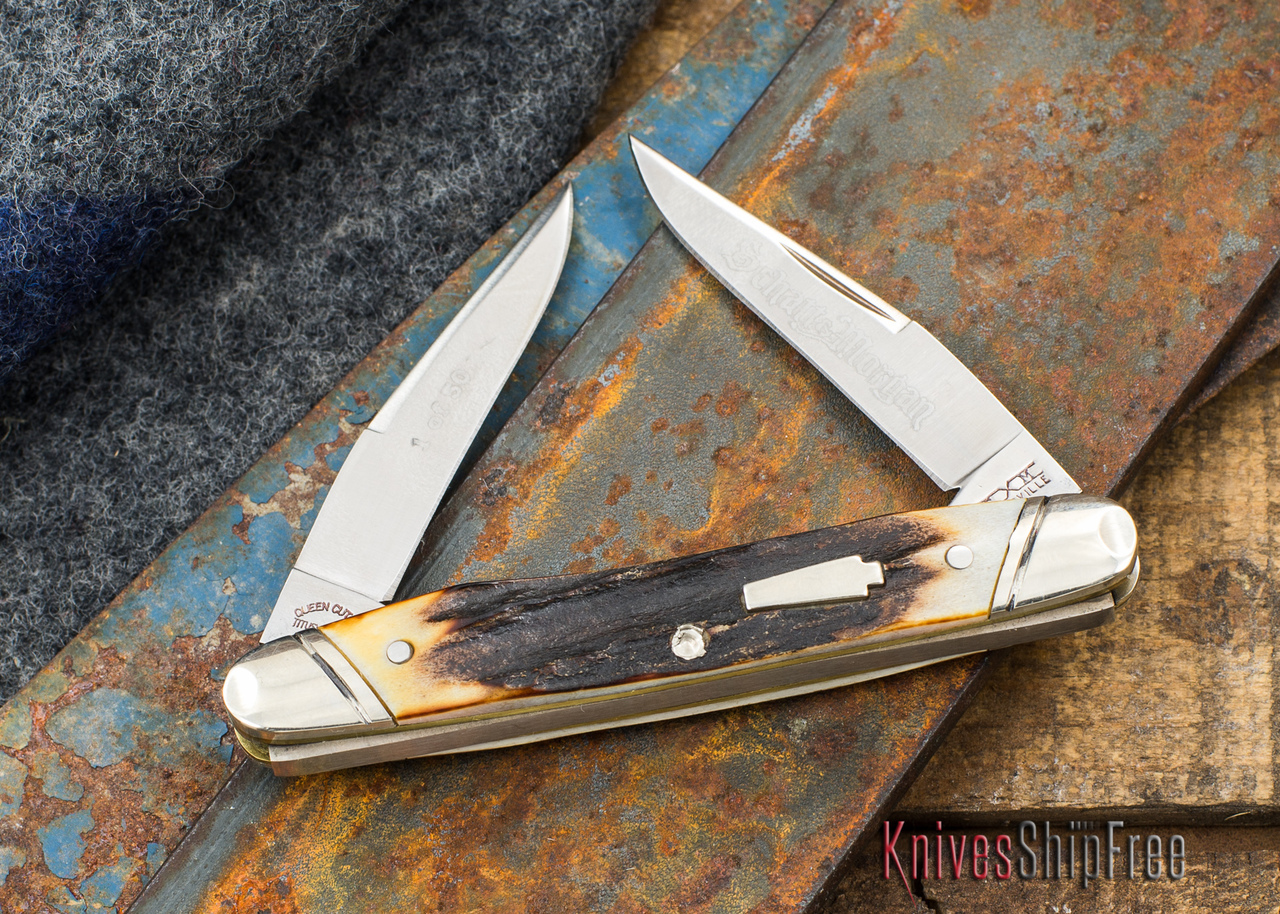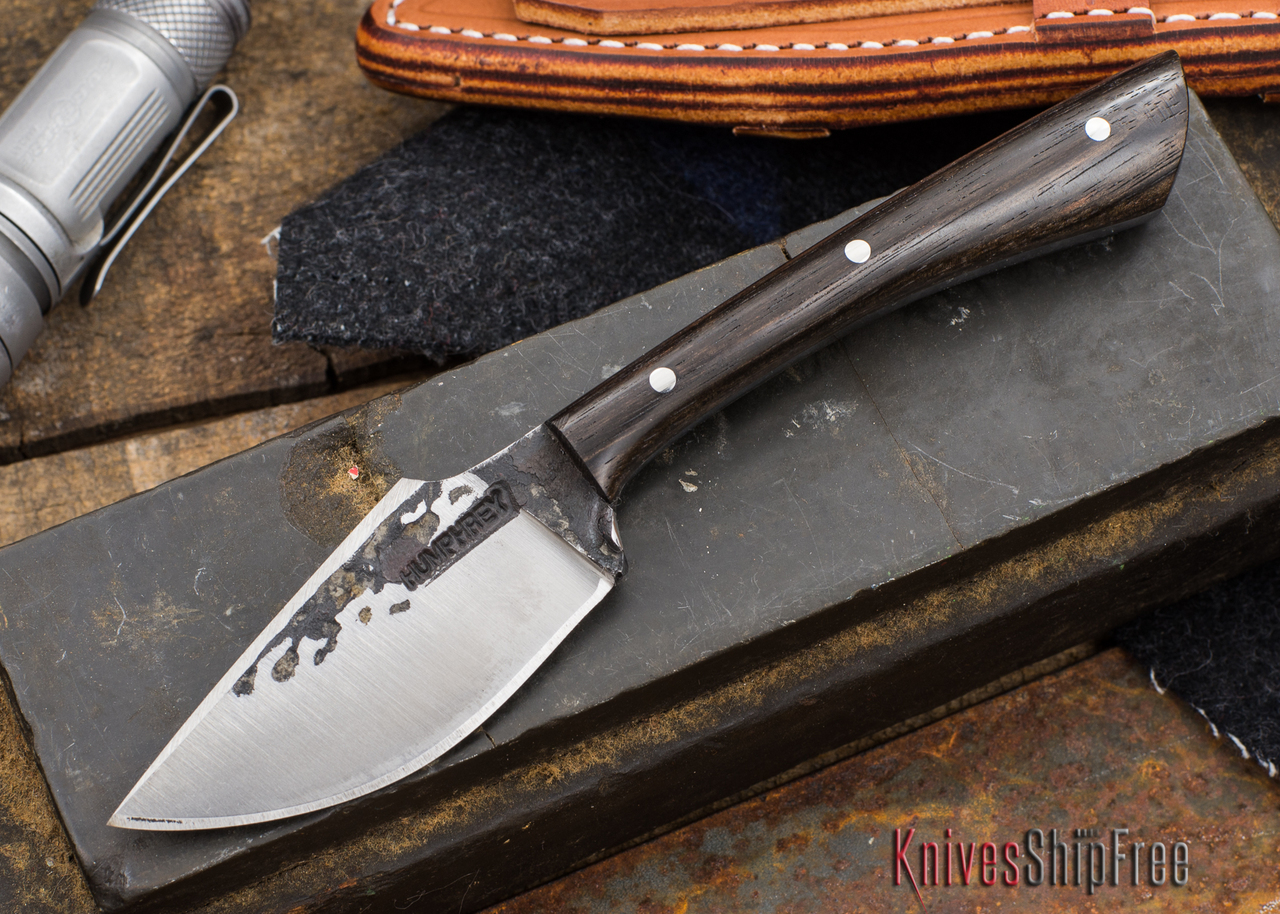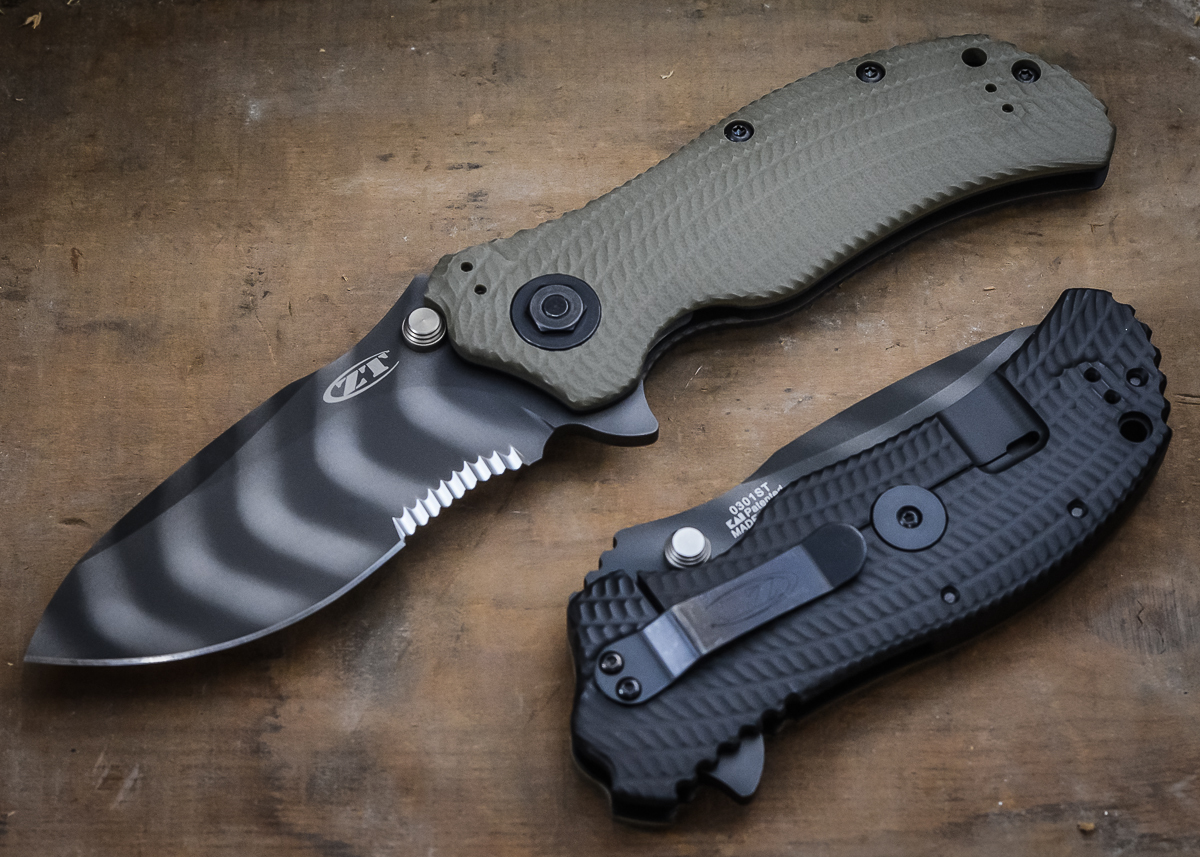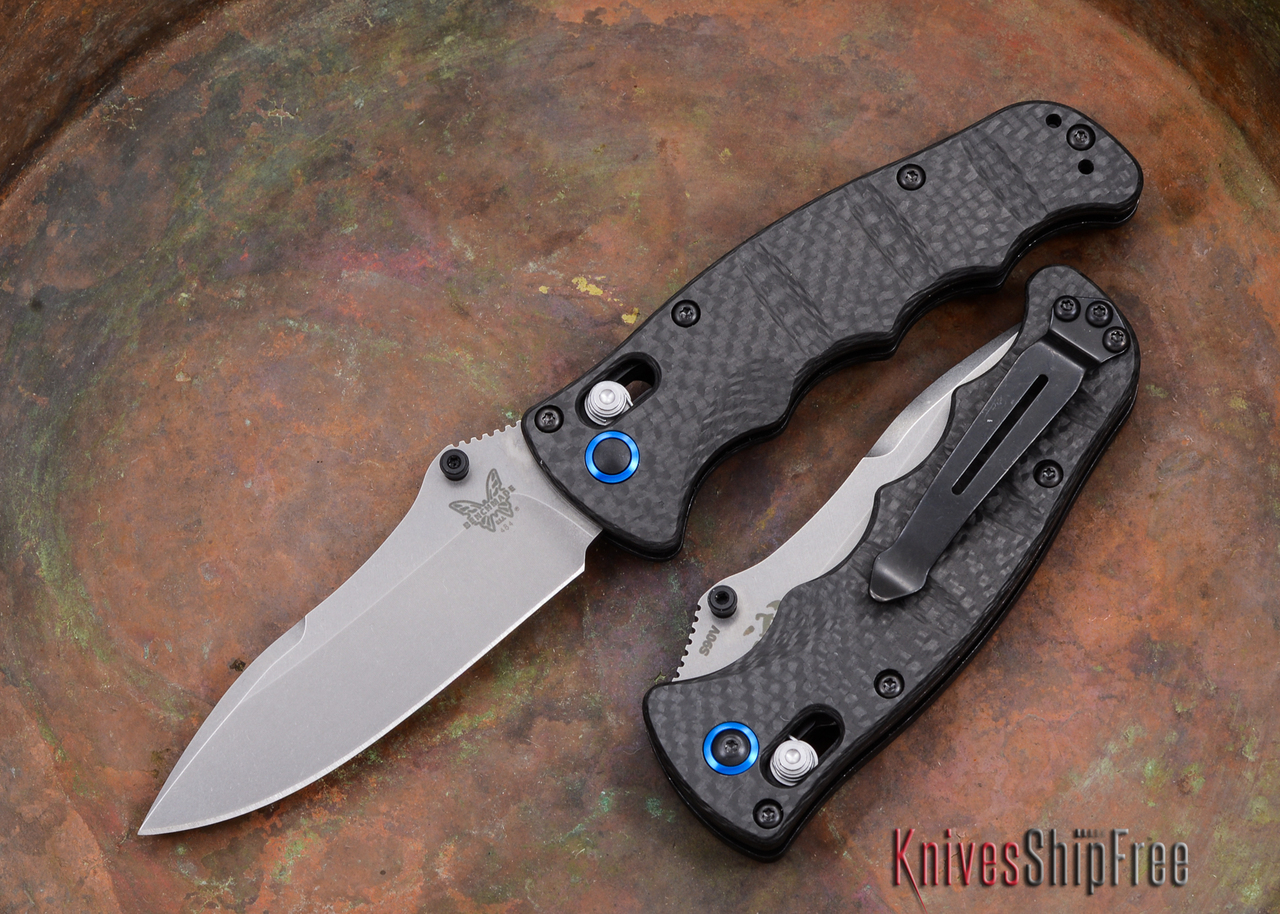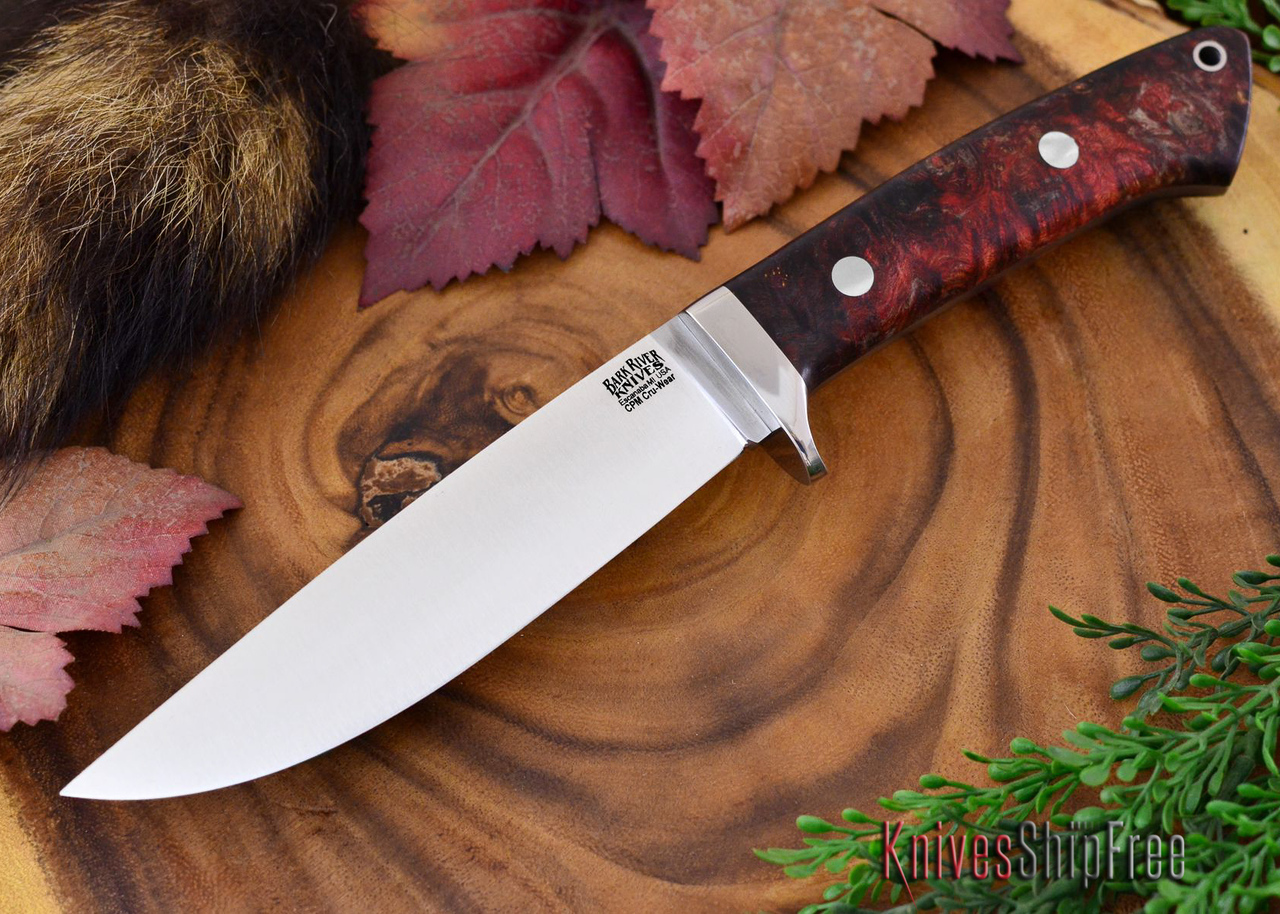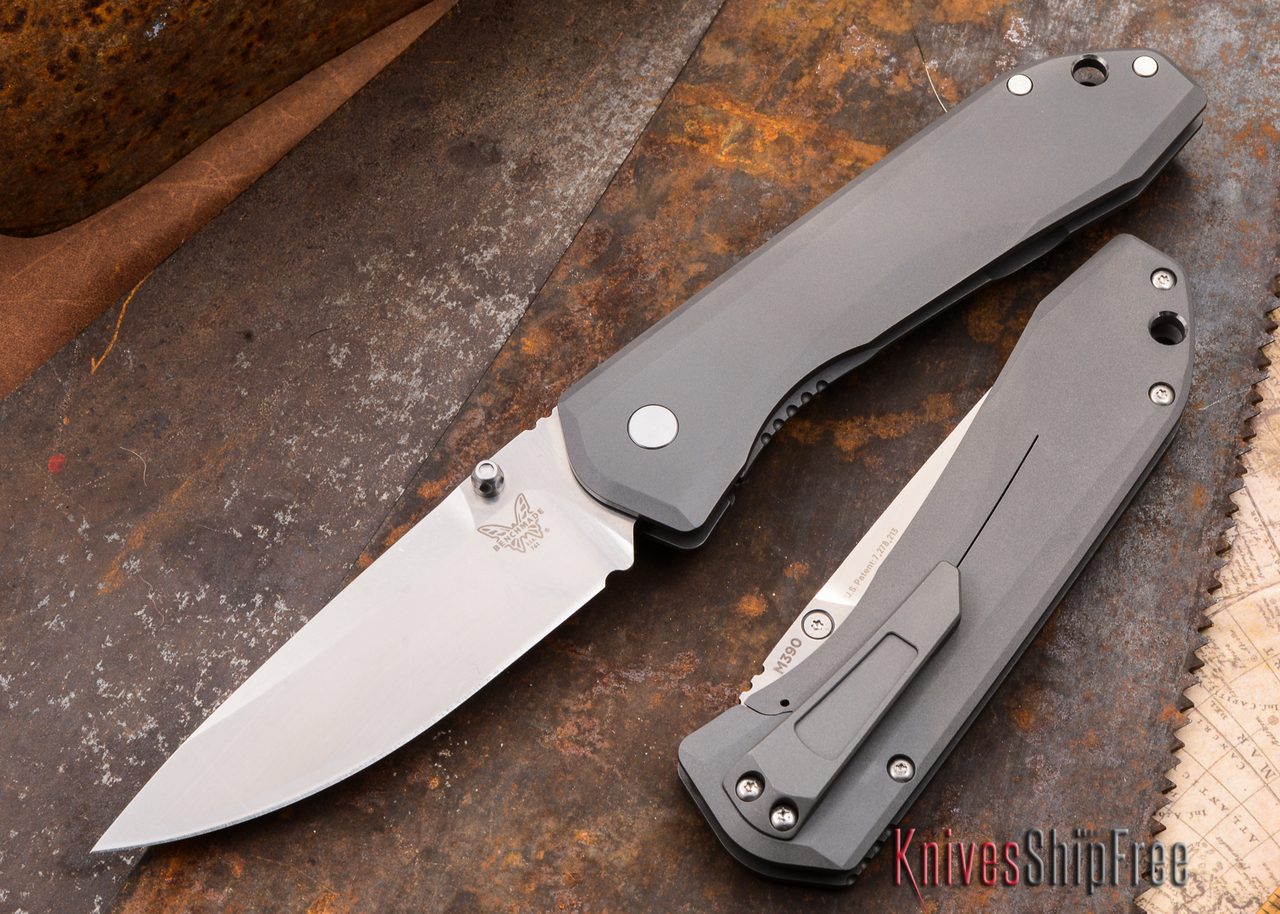Quick-reference guide: Know your knife steels
7th Aug 2015
The products in the KnivesShipFree inventory represent dozens of different steels -- stainless steels and carbon steels, tool steels and "super" steels -- and we know that can be a bit overwhelming when all you're trying to do is choose a knife. That's why we put together this handy quick-reference guide, arranged in alpha-numerical order.
3G
What it is: 3G is a powder-metallurgy stainless steel used by Fällkniven.
Advantages: Wear resistance, corrosion resistance.
Disadvantages: Can be difficult to sharpen.
Who uses it: Fällkniven.
13C26
What it is: 13C26 is a Sandvik stainless steel commonly used in razors and kitchen knives.
Advantages: Toughness, edge retention.
Disadvantages: Modest corrosion resistance.
Who uses it: Buck Knives.
14C28N
What it is: 14C28N is a Sandvik stainless steel commonly used in razors and kitchen knives.
Advantages: Toughness, edge retention.
Disadvantages: Modest corrosion resistance.
Who uses it: Kershaw.
19C27
What it is: 19C27 is a Sandvik stainless steel commonly used in heavy-use sporting knives.
Advantages: Edge retention, wear resistance, corrosion resistance.
Disadvantages: Relatively difficult to sharpen.
Who uses it: Canal Street Cutlery.
154 CM
What it is: Crucible 154 CM is a high-quality stainless steel, one of the most popular modern corrosion-resistant steels.
Advantages: Toughness, edge holding, corrosion resistance.
Disadvantages: Can be relatively difficult to sharpen (compared to carbon steels and softer stainless steels).
Who uses it: Benchmade, Emerson Knives, Tuna Valley Cutlery.
420HC
What it is: 420HC is a relatively soft, cost-effective stainless steel.
Advantages: Easy to sharpen, extremely corrosion-resistant (the most corrosion-resistant of the 400-series stainless steels).
Disadvantages: Relatively modest edge-holding.
Who uses it: Great Eastern Cutlery, Kershaw, Schatt & Morgan.
440A
What it is: 440A is a relatively soft, cost-effective stainless steel.
Advantages: Very corrosion-resistant, relatively easy to sharpen.
Disadvantages: Relatively modest edge-holding ability.
Who uses it: Buck Knives.
440C
What it is: 440C is a relatively soft, cost-effective stainless steel.
Advantages: Very corrosion-resistant, relatively easy to sharpen.
Disadvantages: Relatively modest edge-holding.
Who uses it: Benchmade, Canal Street Cutlery, Great Eastern Cutlery.
1084
What it is: 1084 is a plain carbon steel which is popular with forgers.
Advantages: Ease-of-sharpening, edge-holding.
Disadvantages: Rusts relatively easily.
Who uses it: Lon Humphrey Custom Knives.
1095
What it is: 1095 is a plain carbon steel, very common in folding and fixed-blade knives designed for everyday use.
Advantages: Ease-of-sharpening, edge-holding.
Disadvantages: Rusts relatively easily.
Who uses it: Great Eastern Cutlery, Hess Knifeworks, Lon Humphrey Custom Knives, Northwoods Knives.
5160
What it is: 5160, often called "spring steel," is a carbon steel commonly used in large knives.
Advantages: Toughness, wear resistance.
Disadvantages: Rusts relatively easily.
Who uses it: Buck Knives.
A2
What it is: A2 is a carbon tool steel, known for its toughness and ease-of-maintenance.
Advantages: Toughness, ease-of-sharpening.
Disadvantages: Relatively low wear resistance.
Who uses it: Bark River Knives, Fiddleback Forge (handmade), L.T. Wright Handmade Knives.
CPM 3V
What it is: CPM 3V is a "Crucible Particle Metallurgy" carbon tool steel, widely regarded as a "super steel" for its properties and performance.
Advantages: Extraordinary toughness, wear resistance.
Disadvantages: Relatively more difficult to sharpen than predecessor steels like A2.
Who uses it: Bark River Knives, Fiddleback Forge (handmade), Koster Knives.
CPM 4V
What it is: CPM 4V is a "Crucible Particle Metallurgy" carbon tool steel, widely regarded as a "super steel" for its properties and performance.
Advantages: Relative toughness, wear resistance.
Disadvantages: Relatively more difficult to sharpen than CPM 3V and predecessor tool steels like A2, not as tough as CPM 3V.
Who uses it: Bark River Knives.
CPM 20CV
What it is: CPM 20CV is a "Crucible Particle Metallurgy" stainless steel, widely regarded as a "super steel" for its properties and performance.
Advantages: Outstanding edge holding and corrosion resistance, requires little maintenance.
Disadvantages: Very difficult to sharpen.
Who uses it: Bark River Knives.
CPM 154
What it is: CPM 154 is the "Crucible Particle Metallurgy" version of 154 CM stainless steel, and is widely regarded as a "super steel" for its properties and performance.
Advantages: Toughness, edge retention, corrosion resistance.
Disadvantages: Can be relatively difficult to sharpen (compared to carbon steels and softer stainless steels).
Who uses it: Bark River Knives, Fiddleback Forge, Northwoods, Alan Warren.
CPM M4
What it is: CPM M4 is a "Crucible Particle Metallurgy" carbon tool steel, widely regarded as a "super steel" for its properties and performance.
Advantages: Relative toughness, wear resistance.
Disadvantages: Relatively more difficult to sharpen than CPM 3V and predecessor tool steels like A2, not as tough as CPM 3V or CPM 4V.
Who uses it: Bark River Knives, Zero Tolerance.
CPM S30V
What it is: CPM S30V is a "Crucible Particle Metallurgy" stainless steel, widely regarded as a "super steel" for its properties and performance.
Advantages: Wear resistance, corrosion resistance.
Disadvantages: Relatively difficult to sharpen, can be prone to chipping in certain applications.
Who uses it: Benchmade, Buck Knives, Chris Reeve Knives, Kershaw, Spartan Blades, Alan Warren, Zero Tolerance.
CPM S35VN
What it is: CPM S35VN is a "Crucible Particle Metallurgy" stainless steel, an improvement over CPM S30V, and is widely regarded as a "super steel" for its properties and performance.
Advantages: Toughness, wear resistance, corrosion resistance.
Disadvantages: Relatively difficult to sharpen.
Who uses it: Bark River Knives, Arno Bernard Knives, Chris Reeve Knives, Fiddleback Forge (production), Spartan Blades, Three Sisters Forge, Zero Tolerance.
CPM S90V
What it is: CPM S90V is a "Crucible Particle Metallurgy" stainless steel, widely regarded as a "super steel" for its properties and performance.
Advantages: Wear resistance, corrosion resistance.
Disadvantages: Very difficult to sharpen.
Who uses it: Benchmade.
Cru-Wear
What it is: Crucible Cru-Wear is a tool steel with tremendous wear resistance and excellent overall toughness.
Advantages: Toughness, edge retention, wear resistance.
Disadvantages: Can be relatively difficult to sharpen.
Who uses it: Bark River Knives.
D2
What it is: D2 is a carbon tool steel with a relatively high chromium content, prompting some to call it a "semi-stainless" steel. Not as tough as the best carbon steels, it's tougher than most stainless steels.
Advantages: Wear resistance, rust resistance (compared to other carbon steels).
Disadvantages: Relatively more difficult to sharpen than other tool steels.
Who uses it: Benchmade, Canal Street Cutlery, Brous Blades, Queen Cutlery, L.T. Wright Handmade Knives.
Elmax
What it is: Elmax stainless steel, a powder-metallurgy material produced by Bohler-Uddeholm, is widely regarded as a "super steel" for its properties and performance.
Advantages: Toughness, extremely high wear resistance and corrosion resistance.
Disadvantages: Can be difficult to sharpen.
Who uses it: Bark River Knives, LionSteel, Zero Tolerance.
M390
What it is: M390 stainless steel, a powder-metallurgy material produced by Bohler-Uddeholm, is widely regarded as a "super steel" for its properties and performance.
Advantages: Extremely high wear resistance and corrosion resistance.
Disadvantages: Relatively difficult to sharpen.
Who uses it: Benchmade, Zero Tolerance.
N680
What it is: N680 is a stainless steel produced by Bohler-Uddeholm, commonly used where corrosion resistance is important.
Advantages: High corrosion resistance, toughness.
Disadvantages: Modest edge-holding.
Who uses it: Benchmade.
N690
What it is: N690 is a premium stainless steel produced by Bohler-Uddeholm.
Advantages: High corrosion resistance, edge retention.
Disadvantages: Can be relatively difficult to sharpen.
Who uses it: Arno Bernard Knives.
O1
What it is: O1 is a carbon steel popular with bladesmiths for hand-forged knives.
Advantages: Wear resistance, edge stability and relative toughness (although not as tough as many tool steels).
Disadvantages: Rusts relatively easily.
Who uses it: Fiddleback Forge (handmade), Mike Malosh, Oaks Bottom Forge.
Sleipner
What it is: Sleipner is a high-chromium carbon tool steel, made by Bohler-Uddeholm and used by LionSteel.
Advantages: Rust resistance, wear resistance, toughness.
Disadvantages: Can be relatively difficult to sharpen (compared to other carbon steels).
Who uses it: LionSteel.
VG-10
What it is: VG-10 is a Japanese stainless steel popular in mid-range folding and fixed-blade knives.
Advantages: Toughness, wear resistance, corrosion resistance.
Disadvantages: Can be more difficult to sharpen than carbon steels and softer stainless steels.
Who uses it: Fällkniven.







